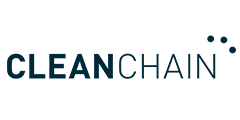How Interface is driving down its scope 3 emissions
Article
Interface was an early proponent of carbon measurement
Interface has been gathering scope 3 data from its suppliers for far longer than most, but that doesn’t mean data collection is easy.
ADEC Innovations recently hosted a webinar on how companies can tackle the challenges of scope 3 emissions strategically and cost-effectively. One of our guest speakers was Mikhail Davis, Director of Technical Sustainability at Interface. Mikhail leads Interface’s Mission Zero and Climate Take Back Commitments and is a veteran sustainability strategist, having served as advisor to numerous Fortune 500 companies.
Interface is a global flooring company that has been on its sustainability journey for over 25 years. The company sees reversing global warming as core to the corporate mission and has set a science-based climate target for reducing scopes 1 and 2 emissions by 50% on an absolute basis, as well as a goal to reduce scope 3 emissions from its purchased goods and services by 50% by 2030. By 2040, they seek to go beyond this to become a carbon negative company.
Interface was an early proponent of carbon measurement
A flooring company with a sky-high vision, Interface began its climate journey in the mid-90s propelled by its founder Ray Anderson. Always at the forefront of corporate climate innovation, Davis recounts that “we were reporting greenhouse gas emissions before there was even a GHG Protocol.”
While values motivated the company’s direction, the sustainability culture at Interface was highly data-driven.
“Ray was a big one on data,” says Davis. “He was an old Georgia Tech engineer. His favorite quote was ‘In God we trust. All others bring data.’”
Collect the data you need to act
Interface has been gathering scope 3 data from its suppliers for far longer than most, but that doesn’t mean data collection is easy.
For Interface, Davis notes, “we have to do that in the most economically efficient way, which means we need to know where the big wins are. “For a carpet manufacturer, those big wins are in reducing emissions in purchased goods and services – in other words, supplier emissions.
But, says, Davis, “even within that, you need to figure out what to prioritize.”
“We make a lot of carpet tile, and the main thing that drives the footprint of carpet tile is making nylon from crude oil.” LCA analysis revealed that replacing virgin nylon with recycled content would drive significant carbon reductions. Interface put out a challenge to its suppliers: “We said whoever can provide recycled nylon that meets our specifications in all our performance attributes, they’ll get all of our business.” One supplier rose to the challenge and with this material innovation and other efforts, the embedded carbon emissions of Interface’s carpet line has plummeted by 79% on an intensity basis since 1996.
Integrate your climate strategy into your business strategy
Davis advises companies not to settle for regulatory compliance. Instead, figure out how to solve the climate problem and what that looks like in your business. And, while yes – there is a lot of reporting businesses need to do — when doing so, “figure out how that’s going to make you a better company.”
“It all has to be one plan,” says Davis. How do we make ourselves a better business? How do we launch better products that people are going to like more?
And, by the way, cut our carbon footprint in half.”
He notes that getting there might require reorganizing how you deal with sustainability in your company. Interface no longer has a stand-alone chief sustainability officer. There was a recognition that sustainability needed to be deeply embedded in the company’s innovation engine, so now the company’s Chief Innovation Officer oversees sustainability.
“Now all the people that develop our new products are reporting to the same person as the people working on sustainability,” says Davis. These teams need to work in lockstep, because “we can’t launch a product that doesn’t help us hit our science-based target. We can’t make business investments that don’t serve that.”
Learn more about the Interface climate journey by listening to the complimentary webinar on demand here.
Get in touch: dataassured@adec-innovations.com






